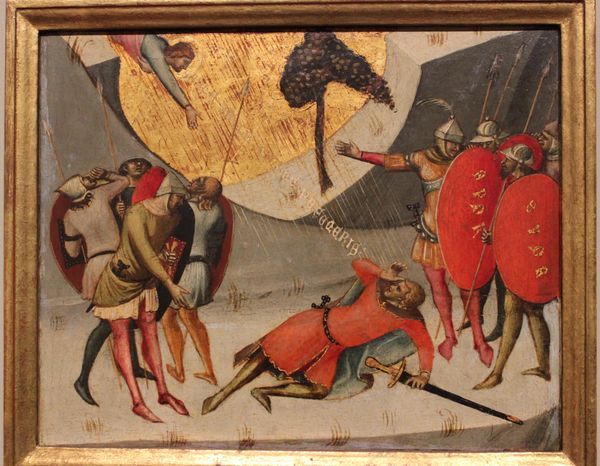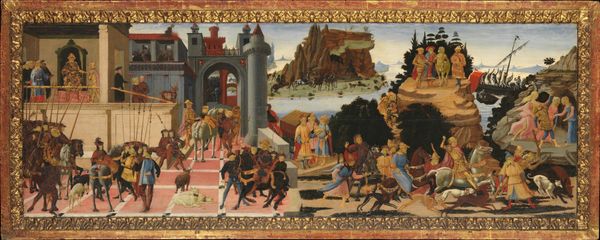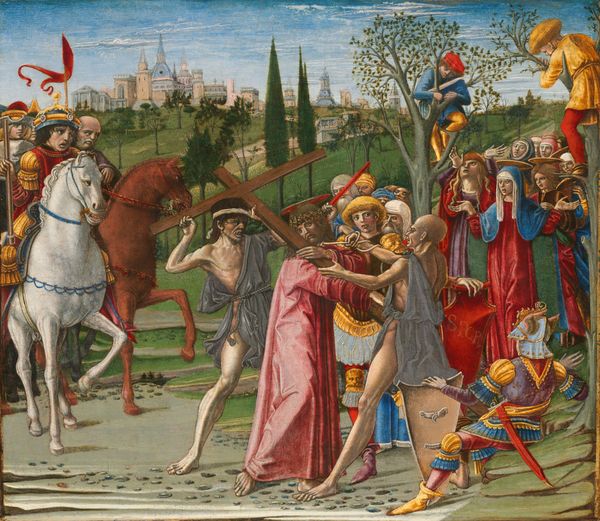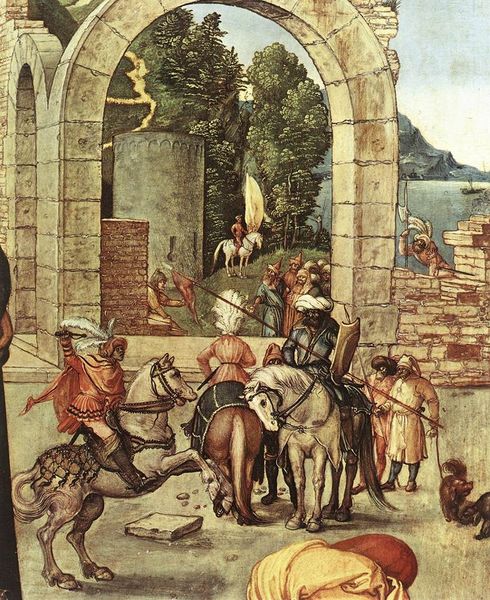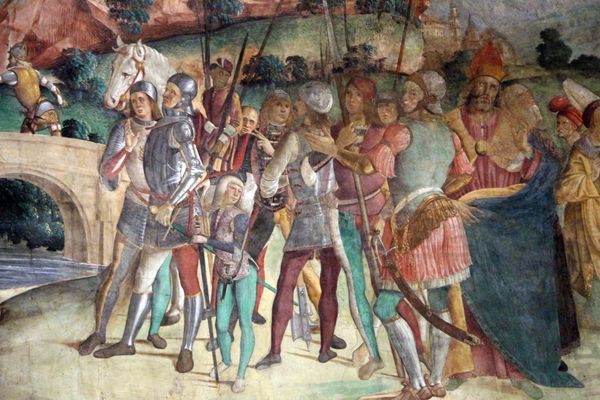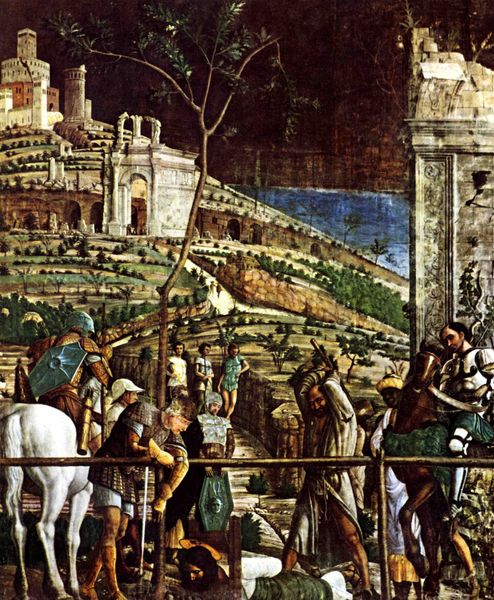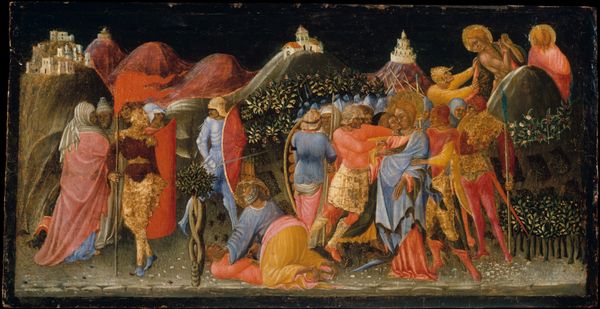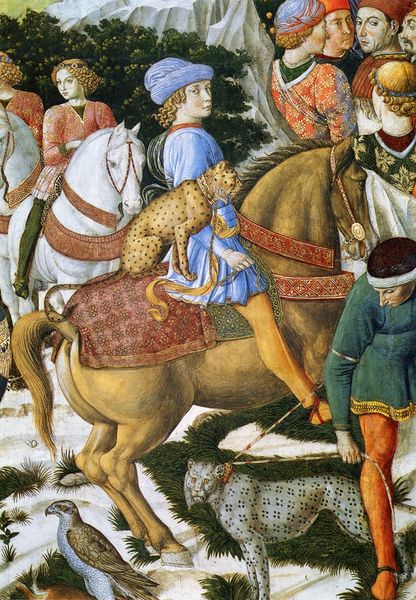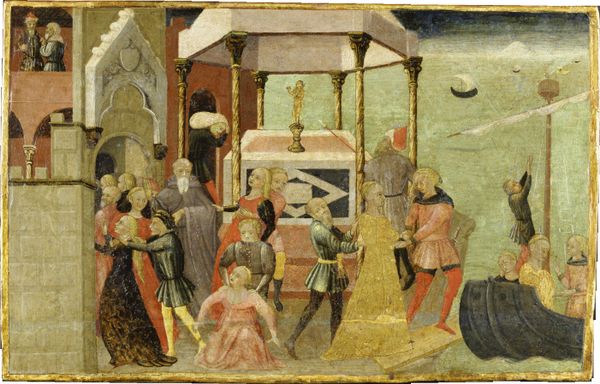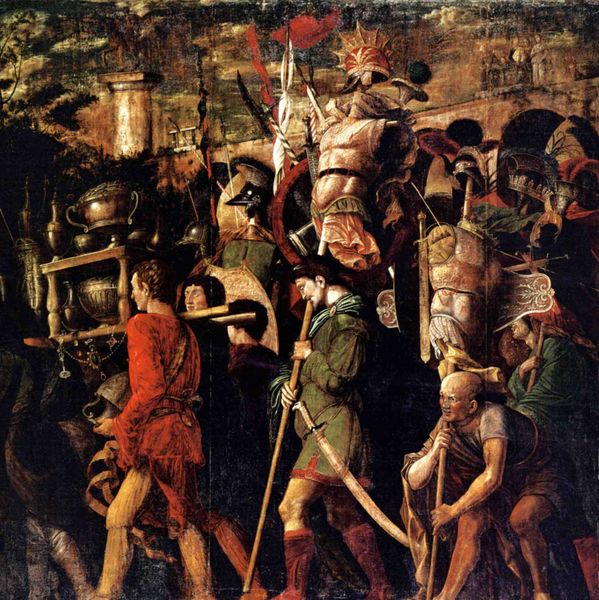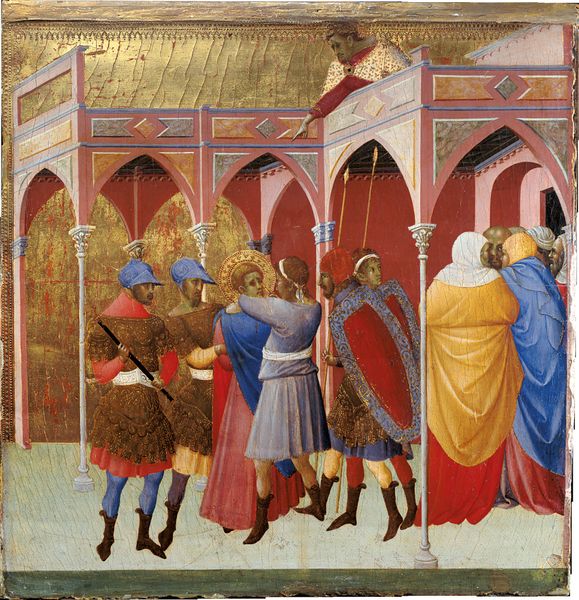
tempera, painting
#
narrative-art
#
tempera
#
painting
#
landscape
#
figuration
#
oil painting
#
cityscape
#
history-painting
#
academic-art
#
italian-renaissance
Copyright: Public domain
Curator: What a vibrant scene! It gives such a lively, processional feeling, almost like a stage set with these figures moving across it. Editor: Indeed. What we’re looking at is a tempera on panel work titled "Frederick III and Leonora of Portugal in Rome." It's attributed to Lo Scheggia and dates back to 1452, offering us a window into the Italian Renaissance. Curator: The composition is striking. Notice the crisp delineation of forms and how the artist utilizes contrasting hues to guide the viewer’s eye. The architectural elements, those pale towers and walls, act as counterpoints to the movement in the center. Editor: And consider the historical weight it carries. The arrival of Frederick III, the Holy Roman Emperor, and his new bride, Leonora, into Rome was a significant political event. This image serves almost as a piece of propaganda, celebrating imperial power and the union of these influential families. Curator: It’s also fascinating to observe the flattening of space, a hallmark of earlier Renaissance styles. Depth is suggested, not truly achieved, creating a certain stylized artificiality. Note how each figure, each horse is rendered with the same degree of clarity. Editor: Absolutely. This approach was meant to display precision and order rather than photorealism, highlighting the opulence of the entourage. The gold embellishments also indicate the elevated status of its patrons, aligning the artwork with a luxurious and political context. Curator: Thinking purely of form, the way the red of some riders' robes repeats against the distant buildings gives an amazing structural and rhythmical flow to the image. It creates visual connections between disparate areas. Editor: Yes, and that particular red would have resonated deeply. During the Renaissance, certain pigments symbolized royalty, divinity, or status. The color use further entrenches its historical message of power. Curator: Considering all of these elements in terms of pictorial organization, it is amazing how skillfully they were used to create an iconic depiction. Editor: It is fascinating how deeply a singular piece can bridge aesthetics, representation, and profound cultural narratives of the past.
Comments
No comments
Be the first to comment and join the conversation on the ultimate creative platform.
